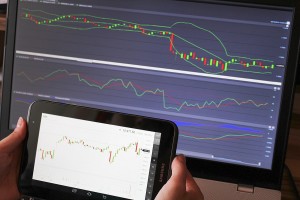
Image source: Pixabay
Binary options and day trading are two of the most popular investment methods. There are plenty of similarities between the two which leads some to believe they are more or less the same thing. But there are some differences between the two.
The most basic aspects of binary trading apply to day trading as well. Both imply the trader answering a “yes or no” question: will the value of this asset go up? If the answer is “yes,” then a binary trader will put in a Call order. A day trader will buy, in order to sell at a later time. Since the basic principle behind these types of trading methods is the same, they will share other aspects as well.
However, broadly speaking, the main difference between binary options and day trading has to do with flexibility. Day trading tends to be more adaptable when it comes to a number of key aspects.
Each trader has their own opinion about which is the best, but the truth is, in spite of their similarities, each has its own advantages and disadvantages. It is important to see how these differences translate into practice and how they affect the process of trading. In the end, choosing an investment method is up to you. By understanding the difference between binary options and day trading, and how this difference translates into practice, can help you decide which one is more appealing.
Difference in Opening and Closing Time Frame
When it comes to opening and closing a trade, day trading usually gives you ample time to decide. By contrast, binary trading provides you with a fixed period. Recently the most popular binary options trade type is the 60-second trade. That means there is only one minute between the opening and the closing of a trade, during which you can make your decision.
Day trading, as the name implies, gives you one full day to close a deal. You can decide to close it after just one minute, though some trading platforms might have specific rules about how soon you can close a deal after its opening.
Fixed Versus Variable Rewards
Binary options trading have a fixed payout rate. In general, brokers offer a payment of around 80%, though this percentage may vary. That means that for every $10 you invest, if the prediction is correct, you gain $8. No matter how much the market fluctuates, if you predicted that a certain value will go up, even if it increased by just one pip, you always get the same reward.
When it comes to day trading, profits depend on market volatility. Traders buy assets which they then hope to sell for profit by the end of the day. Depending on how much the value of that increases, they stand to make a much higher profit than those who deal in binary options. If the market remains relatively stable during a day, traders cannot hope to gain much from their investments, since the difference between the buying price and selling price will be quite small. Unlike traders who deal in binary options, day traders do not have a guaranteed profit sum.
This is one of the aspects that has the trading community divided. Many find the prospects of high rewards quite appealing. Others prefer to know exactly how much they will be making on every deal. You shouldn’t be swayed by the common Forex market myths. Rarely do traders become millionaires overnight with either method.
Risk Factors and Uncertainty
Binary options traders also have fixed loss rates, not just rewards. For every unsuccessful trade, investors stand to lose the whole sum they bid on an asset going up or down. In this respect, binary options trading is less profitable than day trading.
Because profits depend on market volatility, the risks involved differ as well for day traders. Certainly, day traders can lose everything they have invested as well, but this loss is not guaranteed. They can very well make up for the loss, or stand to lose less than 100% of their investment.
In a sense, day trading is riskier than binary options trading because there is always a level of uncertainty. As a day trader, you can never really predict how much you’re going to win or lose on a deal. As a binary options trader, in this respect, you can be sure in both cases how much money you’ll have when a deal closes, whether you were right or wrong in your predictions.
This is one of the reasons why some prefer binary options trading over day trading. While it may be less flexible when it comes to profits, it’s also much more predictable when it comes to risks and losses.
However, bear in mind that the Forex investments are always risky. Before deciding to invest, you should ask yourself whether the profits are worth the risk for you.
Types of Orders

Image source: Deposit Photos
Because day trading gives you more time to adjust your trade, there are also more types of orders to choose from. Binary trading options are call/put (also known as high/low), touch/no touch, boundary options (similar in some respects with the touch/no touch option) and option builder. Beyond that, there are many adjustments you can make to a trade, once you’ve made your prediction.
Day traders can set limit orders, stop orders, OCTO (one cancels the other) and hedge orders, to name but a few of the operations they have at their disposal. These tools are meant to limit risks and maximize potential profit. Since day trading is much more flexible, it can also lead to a greater discrepancy between risks and rewards.
The Degree to Which Market Changes Affect Outcomes
Both types of trading depend on market changes to yield profits. However, the degree to which the market fluctuates has a relatively small impact on binary options trading compared to day trading.
Day trading depends a lot on market changes. There is no fixed pay-out. Instead, traders make a profit based on the difference between the price they paid to by an asset and the price it had when they sold it. Because the sum varies according to market fluctuations, day trading payouts can be much more impressive than binary trading ones. Even a small investment can make a huge profit if the selling price grows significantly.
However, there is much less control over the outcome of the trade. A binary option trader will always know exactly how much they will earn on each investment. And the more money they invest, the higher the payout will be on a successful deal. Day trading is far less reliable. A large investment can yield a fairly insignificant profit if the market remains stable.
Complexity of the Investment Process
Because there is such a high degree of flexibility to day trading, the process of investing is naturally more complicated. Apart from the numerous orders you can place, there are also risk management measures to implement, and a higher number of variable factors to take into consideration when making your decision.
One of the reasons why binary options trading is such a popular investment opportunity is because the investment process itself is quite easy. In most cases, all you have to do is choose an asset, make your prediction and end the deal at the appropriate time. In most cases, this whole process involves no more than 3-4 steps, far less than those involved in day trading.
Strategizing can also be easier with binary options trading. Since trades typically last just a few minutes, you need to be prepared beforehand. But once the deal is set in place, there aren’t any adjustments to make. The fixed payout rate also means you don’t need such an in-depth knowledge of the market as you would for day trading. All you need to know is whether the value of an asset is likely to go up or down. You don’t have to be specific about the amount.
Day traders, on the other hand, need to be able to predict these finer points as well. It is not enough to know the direction in which an asset is going. You also need to know how much and how long it’s going to take to reach a certain value.
Conclusion
Both trading options presents risks. These risks are inherent in the field. Before you start trading, you should learn how to avoid them as best you can. Each option has some features in place that allow you to mitigate losses.
Of the two, binary options trading tends to have a lower risk factor. The tradeoff comes in expected profit. Rarely are you going to see the spectacular results of day trading, since you will always receive a fixed sum of money on any deal. To truly start gaining a sizable amount of money from binary options, you must spend quite a lot of time investing and scoping out opportunities. The process can be quite slow when compared to day trading.
On the other hand, day trading can lead to some terrible failures as well. The average return rate for day trading is quite difficult to assess, so it’s hard to say how profitable it is. The losses you can incur on a poorly thought out deal can be much larger and harder to recoup. It can also be much more time consuming and requires a lot more preparation. This is why day trading is not very well-suited for beginners.
It’s impossible to choose which type of trading is best. If you are the sort of trader who prefers security over the possibility of a large profit, then binary options trading is more suitable. If you are willing to take the risk and aim higher, day trading is the more exciting option.
Categories: Stock Market
 Exante reviews 2022 from traders regarding the benefits of its platform
Exante reviews 2022 from traders regarding the benefits of its platform
Leave a Reply